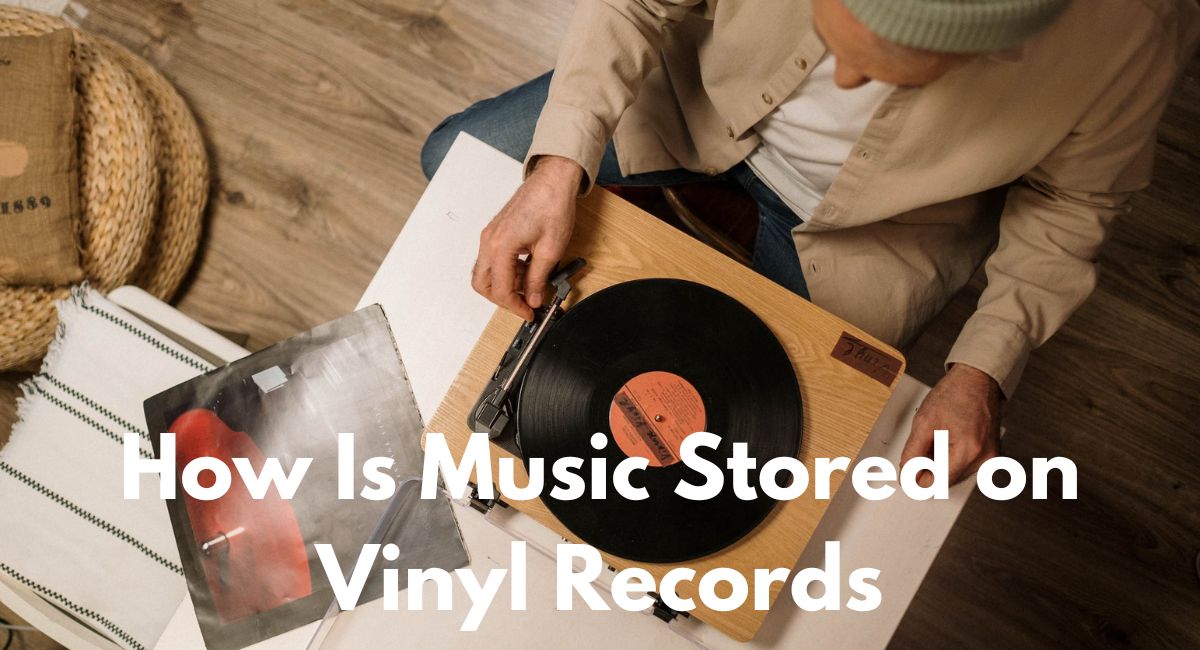Music lovers, get ready for a wild ride into the world of vinyl! 🎵 Have you ever held a record and wondered how those tiny grooves magically transform into the rich, warm sounds that make audiophiles go crazy? I remember the first time I truly understood how vinyl records work – it was like discovering a secret musical language.
Vinyl records are way more than just a nostalgic music format – they’re a mind-blowing testament to analog sound technology. According to the Audio Engineering Society, vinyl can capture sound frequencies that digital formats often completely miss. Mind. Blown. It’s like these records are musical time capsules, preserving sound in a way that’s both scientific and deeply artistic.
The way music is stored on vinyl records is nothing short of magic. Unlike digital files that reduce music to cold, binary code, vinyl records capture sound as physical, microscopic variations in a spiral groove. Imagine sound waves being etched into a material so precisely that each tiny bump and valley represents a different musical note. It’s like turning music into a landscape you can touch and explore!
Contents
The Basics of Sound Recording on Vinyl
Let me tell you a story about my early days of understanding analog sound recording. I was this nerdy teenager who thought digital was always better – until I heard my first properly played vinyl record. Spoiler alert: I was wrong.
Analog sound recording is all about capturing sound waves in their most natural form. Think of it like making a musical footprint in sand. When a sound is recorded, a special machine called a recording lathe literally carves the sound waves into a master disc. It’s not just recording – it’s sculpting music!
The process starts with a microphone converting sound waves into electrical signals. These signals are then sent to a cutting lathe with an incredibly precise stylus – we’re talking microscopic precision here. For mono recordings, the stylus moves side to side. Stereo? It moves both laterally and vertically, creating a more complex musical map.
I once tried explaining this to my buddy who only listens to digital music. His eyes glazed over, but I was fascinated! The way sound gets transformed from vibrations in the air to physical grooves is like musical alchemy. Each record is essentially a topographical map of sound, with mountains and valleys representing different musical frequencies.
Practical tip for vinyl newbies: Not all records are created equal. Mono records have grooves that only move sideways, while stereo records have grooves that move both sideways and up and down. This is why old mono records won’t sound quite right on modern stereo systems.
The Physical Process of Sound Etching
Okay, let’s get nerdy – but in a cool way! The physical etching of sound is like musical sculpting. Imagine a diamond-tipped stylus moving with such precision that it can capture the tiniest nuances of a guitar string’s vibration or a vocalist’s breath.
During recording, a sapphire or diamond-tipped stylus cuts a groove into a soft disc called a lacquer. This isn’t just cutting – it’s creating a microscopic landscape that perfectly represents sound waves. The width and depth of the groove change constantly, representing different musical notes and volumes.
I remember watching a documentary about record cutting, and my mind was blown. The stylus moves with such incredible precision that variations as small as a micron can represent different sound qualities. We’re talking about measurements so tiny that they’re basically invisible to the naked eye!
Different frequencies create different groove patterns. Low frequencies create wider grooves, while high frequencies create tighter, more compact variations. It’s like each musical note has its own unique geographical fingerprint. How cool is that?
Pro tip: Always handle the cutting process with extreme care. Even the slightest dust particle can create unwanted noise in the final recording. Professional sound engineers treat these master discs like precious artifacts – because, well, they are!
From Master Recording to Pressed Vinyl
Creating a vinyl record is like baking an incredibly complex cake – with science! After the master recording is created, it goes through a transformation process that would make any engineer proud.
First, the master disc gets electroplated with metal to create a stamper. This stamper is essentially a negative version of the original recording. It’s like creating a musical mold that can be used to press multiple records. The precision required is mind-blowing – we’re talking about capturing sound waves with accuracy that’s almost impossible to comprehend.
The actual vinyl pressing is a heated, high-pressure process. Raw vinyl pellets are melted and pressed between two stampers – one for each side of the record. The heat and pressure essentially “print” the music into the vinyl, creating those iconic grooves we know and love.
I’ve seen old factory videos of this process, and it’s mesmerizing. Massive machines transforming raw material into musical artifacts, each record a unique physical representation of sound. It’s not just manufacturing – it’s musical craftsmanship.
Quality control is crucial. Even a tiny imperfection can create unwanted noise or affect sound quality. Professional pressing plants have incredibly strict standards, often rejecting records for the smallest defects.
Technical Limitations and Unique Characteristics of Vinyl Sound Storage
Vinyl isn’t perfect – and that’s part of its charm! Each record has limitations that actually contribute to its unique sound. Most standard vinyl records can only hold about 22 minutes of music per side at optimal quality. Want to fit a full album? You’ll need to make some audio compromises.
The groove spacing is critical. Too tight, and you lose sound quality. Too loose, and you can’t fit the entire recording. It’s a delicate balancing act that requires serious engineering skills. I’ve seen audiophiles debate groove spacing like it’s a religious argument!
Record speed matters too. The standard 33 1/3 RPM provides more playing time but slightly lower audio quality compared to 45 RPM records. Hardcore collectors often prefer 45 RPM for its superior sound reproduction, even if it means shorter playing times.
That “warm” vinyl sound everyone talks about? It’s not just nostalgia. The analog nature of vinyl creates subtle audio characteristics that digital formats struggle to reproduce. Slight imperfections, microscopic variations – these contribute to a richer, more organic sound.
The Science of Playback: How a Turntable Reads Vinyl Grooves
Playing a record is like having a microscopic archeologist exploring a sound landscape. The turntable’s stylus travels through those precisely carved grooves, translating physical variations back into sound waves.
The stylus (or needle) is usually made from diamond or synthetic materials, designed to sit perfectly in the record’s groove. As it moves, it generates electrical signals that get converted back into sound. It’s reading a physical map and turning it into music – how wild is that?
Different stylus shapes impact sound quality. Elliptical styli can track more groove details compared to conical ones. It’s like the difference between a fine-tipped pen and a marker – precision matters!
The cartridge plays a crucial role in sound translation. It converts those physical movements into electrical signals that your speakers can understand. A high-quality cartridge can make a massive difference in sound reproduction.
Conclusion
Vinyl records are more than just a music format – they’re a beautiful collision of art, physics, and pure human creativity. Each groove tells a story, not just of music, but of our incredible ability to capture and preserve sound.
Next time you drop a needle on a record, take a moment to appreciate the incredible scientific marvel happening right before your ears. You’re not just playing music – you’re experiencing a complex, precise dance of physics and engineering.
Want to dive deeper into the magical world of vinyl? Drop a comment below and share your favorite vinyl experience! Let’s geek out together about this incredible technology that continues to captivate music lovers around the world.

I am Kenneth Haney, an unyielding audiophile and an ardent collector of vinyl records. My love affair with vinyl started at a young age of 15. As a teenager, I found myself enchanted by the distinct warmth and depth that vinyl brought to music. Unlike digital music, vinyl records carry a tangibility, a piece of history, an art that exists far beyond the confines of an MP3 file.
